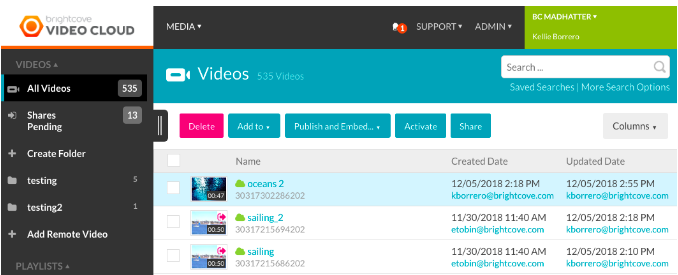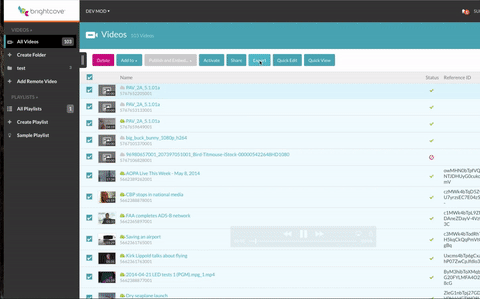HOW TO INCORPORATE VIDEO INTO THE CUSTOMER JOURNEY
bsp-admin-1 on January 30, 2019
Leading demand gen marketers recognize that their job doesn’t end once a prospect signs on the dotted line. It’s crucial to the marketer’s and the organization’s success to continue nurturing that customer’s relationship with the brand’s product and/or services.
One engaging way to nurture that relationship is to incorporate informative video content throughout the customer journey. Not sure which types of videos you should be creating for each stage? Check out the following tips.
AWARENESS
During the awareness stage, you want to get your brand name in front of prospects’ eyes as much as possible. While it may be tempting to start diving into all the details about your amazing products and services right away, it can be valuable to take a step back and take this time to establish yourself as an industry leader in your audience’s eyes.
Consider creating how-to videos that answer common questions your target customers may have. For example, a marketing agency may produce a video about how to launch your content marketing strategy. Or a cybersecurity company could release content around how to respond to an attempted phishing attack.
These types of videos highlight your brand’s expertise to viewers, making them more willing to continue down the sales funnel. The extra bonus here is that how-to content can be easily optimized for search, making it even easier for new prospects to find your brand.
CONSIDERATION
Your goal during the consideration stage is to keep prospects engaged and lead them toward taking a specific action. At this point, you’re focused on reaching an audience who is more likely to need your product or identify with your brand.
One type of video that can be particularly powerful during the consideration stage is a product demo. These assets should give a quick overview of what your product is, how it works, and why your audience needs it.
By creating videos that highlight the features that make your product suite unique, you can be one step closer to landing a new sale.
PURCHASE
Of course, the purchase stage is one of the most exciting. You’re so close to officially converting another prospect, and you just need to provide some final affirmation to confirm they sign on the dotted line.
At this stage, you can offer one final wave of encouragement through customer testimonials and case studies. These types of videos should incorporate first-hand stories from your customers about how your product offerings have helped them streamline a specific process or achieve a particular goal.
Testimonials will resonate with your audience on an emotional level and help you establish trust, a crucial part of any customer relationship.
RETENTION
Now that you’ve earned another customer, it’s time to do all you can to keep them on board. Of course, the retention stage involves meeting customer needs and continuing to take your product suite to exciting new levels. But it should also involve cultivating and maintaining your desired brand image.
And part of your brand image comes down to the team you have in place. Customers appreciate the opportunity to see the people behind the brand. They want to know about your core values and how your team abides by them every day—and company culture videos can be a great way to showcase this.
There are a variety of different tones you can set with these types of video assets. If you’re looking to do something a little more fun, you can incorporate footage of team members enjoying office perks, such as a ping pong table or free bagels on Fridays—which shows that your organization appreciates its employees and values work-life balance. Or you can strike an emotional cord and talk about a great community service initiative employees took on.
When customers believe in the values you have set forth and the people that make your brand great, they’ll be more likely to stick around for the long haul.
ADVOCACY
There’s no better win than having your customer turn into an advocate for your brand. Word-of-mouth marketing can be extremely powerful, so the more brand advocates you have the better. These will be the customers who truly believe in your products and brand, and want to tell others about their positive experiences.
The best advocates will want to share content, such as event videos, that highlights why your brand is their top choice. These videos can feature events like your team celebrating an exciting new launch or one of your leaders presenting at a big industry conference.
This type of video content reaffirms that you’re a leader in your industry and gives you a chance to highlight some of your big wins. Be sure to make these assets easily shareable so that your advocates can spread the word on all their social channels.
Of course, we’ve only just scratched the surface here. There are a wide variety of videos demand gen marketers can incorporate into each stage of the customer journey. But one thing remains clear: Engaging, informative video content can help you turn a prospect into a customer and a customer into an advocate.












